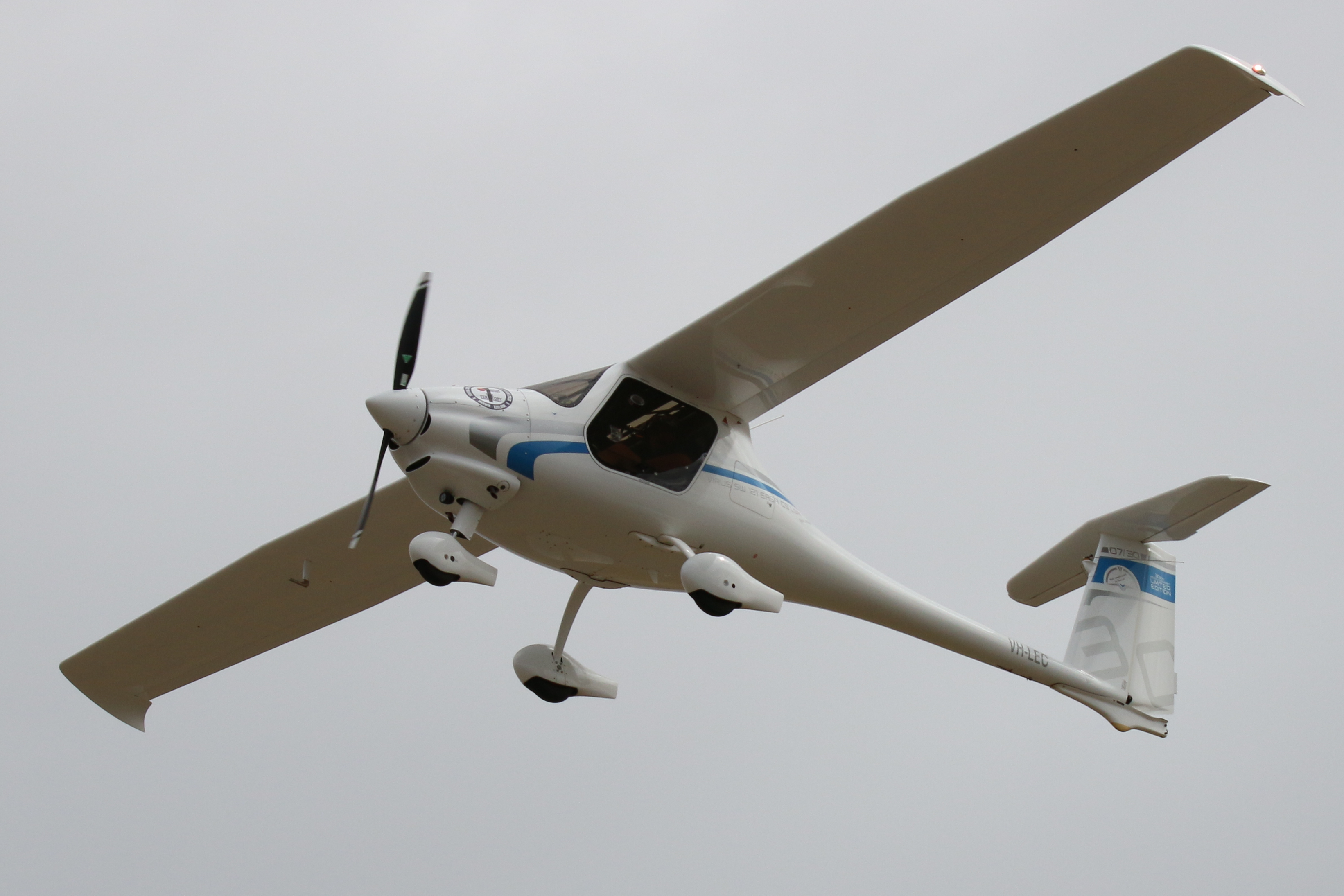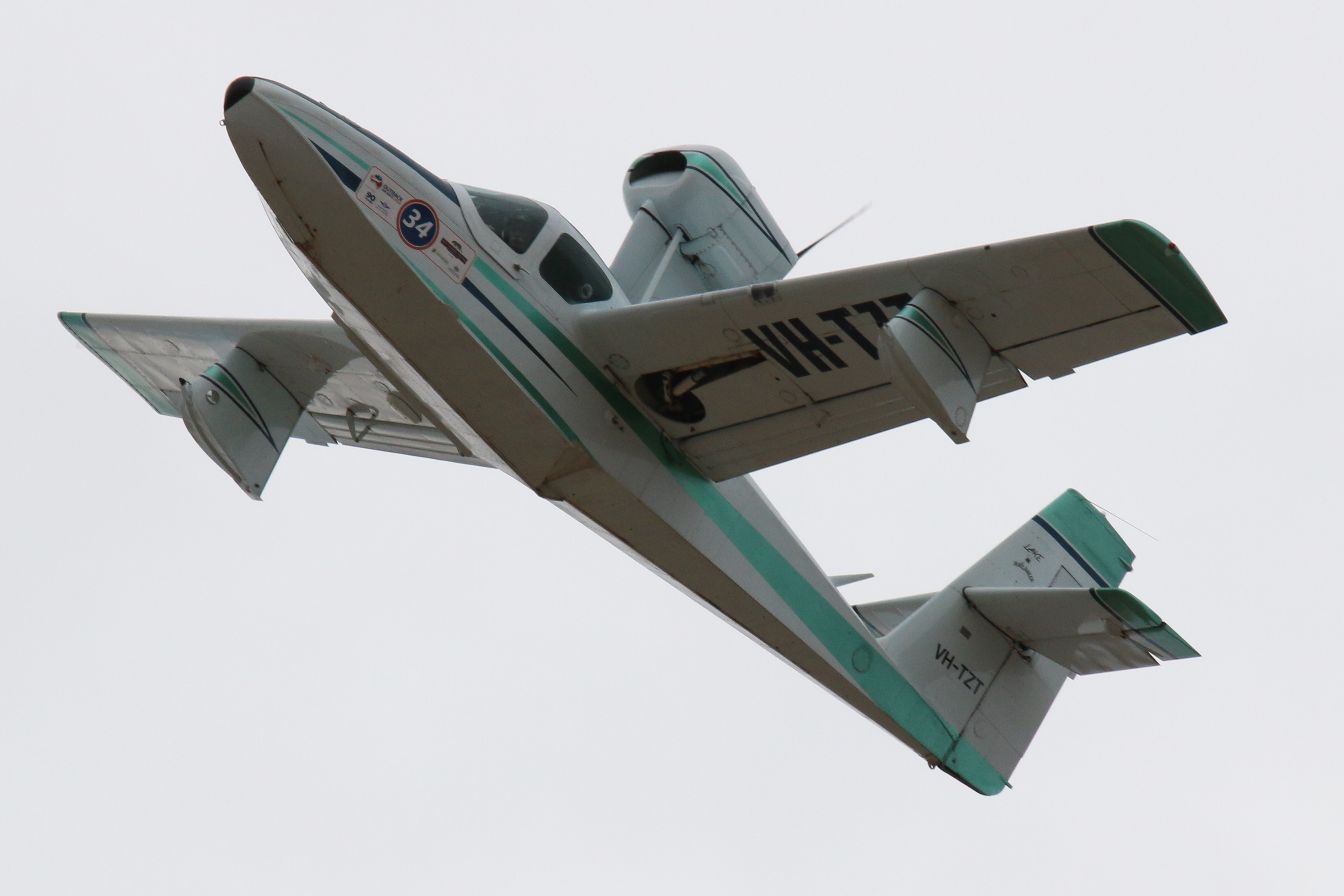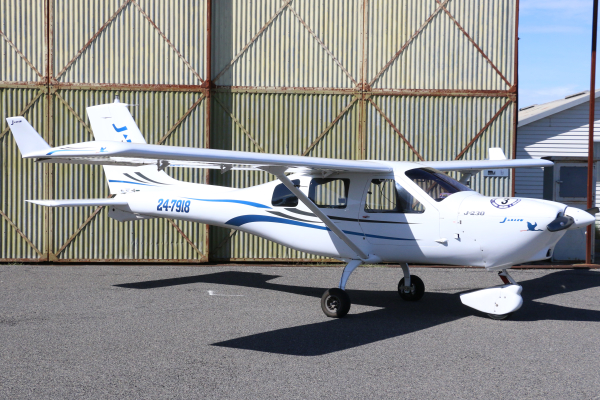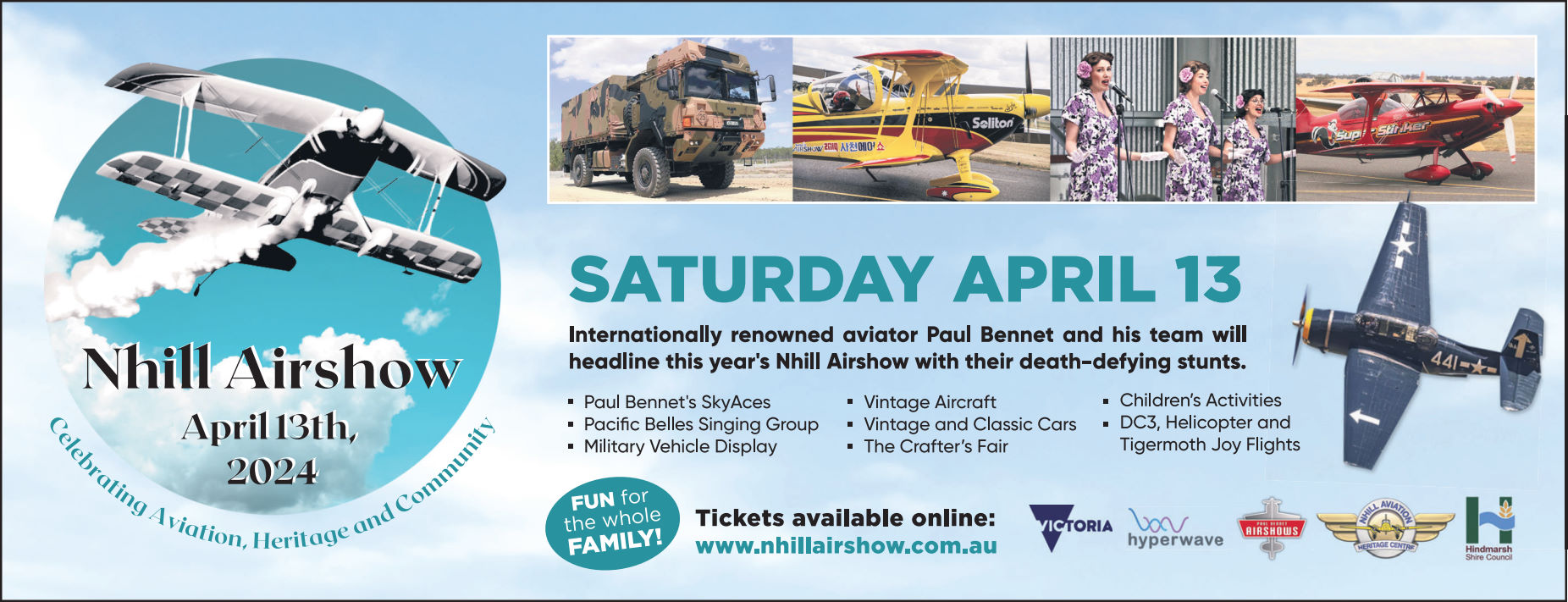Last Saturday a small gathering of Nhill Aviation Heritage Centre volunteers and members of the public joined the seven adventurers who were re-enacting the celebratory flight from Darwin to Adelaide after the 1919 England to Australia Air Race.
In 1919 the Australian government offered a prize of £10,000 for the first Australians to fly a British aircraft from Great Britain to Australia, and six crews accepted the challenge. The winning crew was made up of pilot Ross Smith, his brother Keith Smith as co-pilot, and mechanics James Bennett and Wally Shiers in a modified Vickers Vimy bomber.
Upon crossing the finish line at Darwin, they embarked on a celebratory flight from Darwin to their hometown of Adelaide, and after a stopover in Horsham, flew over Nhill at 11.10 am on March 16, 1920. As they passed over the town, a package of letters with streamers attached was dropped from the aeroplane, which was the first delivery of airmail in country Victoria.
The idea of this centenary flight came about after pilot Michael Smith took delivery of his new Russian built Seabear L-65 aircraft from the factory, and later found himself in England on his way back home at an appropriate time to re-trace the Smith brothers’ flight back to Australia one hundred years earlier.
The trip took three weeks and passed through France, Italy, Crete, Egypt, Jordan, Saudi Arabia, Oman, Pakistan, India, Myanmar, Thailand, Malaysia, and Indonesia before reaching Darwin at 3.45 pm on 10 December, one hundred years to the minute of the arrival of the winners of the race. All the stops made by the original Smiths were repeated except for Syria, Iraq, and Iran due to the political situation in those countries at the time.
Smith returned to Darwin early in March to take part in the Centenary Transcontinental Group Flight which was retracing the celebratory journey made by Ross and Keith Smith after they finished the Air Race to return to their hometown of Adelaide. Following the original route via Daly Waters, Cloncurry, Longreach, Charleville, Caboolture, Narromine, Wollongong, Cootamundra, Benalla and Little River (near Geelong) before making their way to Nhill on Saturday morning.
Four planes made up the flight that arrived in Nhill between 10.30 am and 11.30 am on Saturday, including the amphibious Seabear L-65 ‘Southern Sun’, amphibious Lake Buccaneer, jabiru, and a Pipistrel ultralight which is at the cutting edge of fuel-efficient aviation.
Above - the Seabear L-65 ‘Southern Sun’ aircraft just after take-off (and before raising the wheels) from Nhill on the last leg of the Centenary Transcontinental Group Flight .
Smith gave a brief talk to the assembled enthusiasts about his flight back from England, noting the positives of his trip over the one a hundred years earlier, including more reliable engines, the advantages of GPS guidance and better landing grounds. The biggest negative of the 2019 flight was the paperwork required for such an international trip.
The point that he noted to be the same now as a century earlier was the generosity of the people that were encountered throughout the trip.
Following lunch and a look around the Nhill Aviation Heritage Centre, the group took off mid-afternoon to continue their journey to Gawler.
The Pipistrel (below) was the first aircraft to depart, and after taking off it circled back around the aerodrome and dropped off a package of letters with streamers attached, re-enacting that first aerogram dropped one hundred years earlier.
 The Pipstrel on its flypast delivering the air mail. The Pipstrel on its flypast delivering the air mail.
 The Lake Buccaneer with its unusual ‘pusher’ engine configuration mounted above the fuselage which mounts the airscrew facing backwards rather than the more common forwards. The Lake Buccaneer with its unusual ‘pusher’ engine configuration mounted above the fuselage which mounts the airscrew facing backwards rather than the more common forwards.
 The Jabiru aircraft which was the fourth aircraft for this leg of the Centerany Transcontinental Flight. The Jabiru aircraft which was the fourth aircraft for this leg of the Centerany Transcontinental Flight.
|






